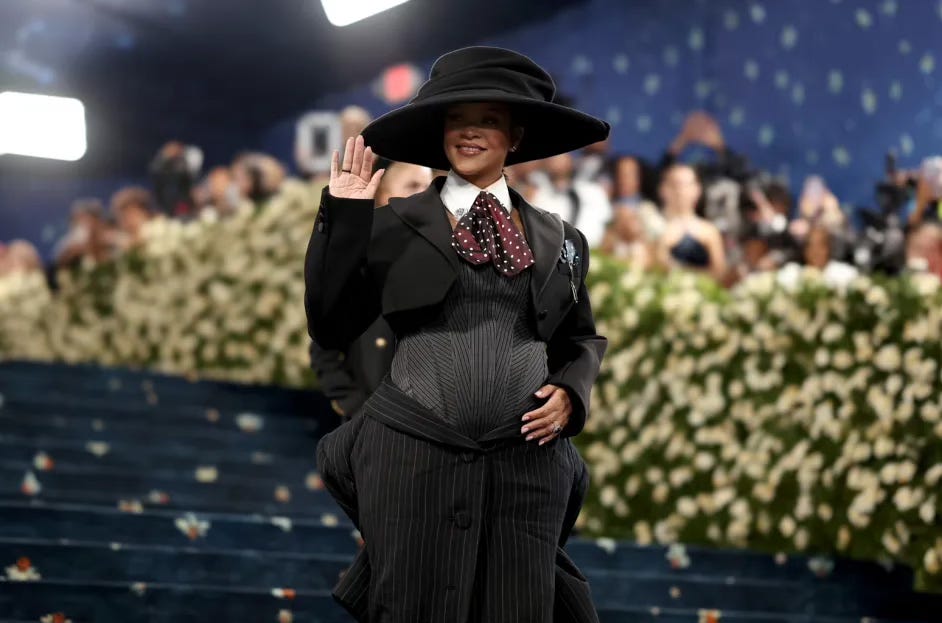The 2025 Met Gala: A Historic Celebration of Black Fashion
The 2025 Met Gala, held on May 5th at the Metropolitan Museum of Art, stands out as one of the most memorable and culturally significant evenings in recent fashion history. With the theme Superfine: Tailoring Black Style, this year’s event not only pushed the boundaries of fashion but also honored the powerful influence of Black culture in the world of style. The evening raised a record-breaking $31 million for the Costume Institute, marking a high point in both fundraising and artistic expression.
A Theme that Redefined Fashion History
The Met Gala's theme for 2025 paid homage to the elegance and resilience of Black dandyism, a fashion movement that has influenced Western style for centuries. Rooted in the African diaspora and exemplified by figures like Josephine Baker, André Leon Talley, and Dapper Dan, Black dandyism has always been about much more than clothing—it's about identity, rebellion, and pride. The theme was inspired by Monica L. Miller’s book Slaves to Fashion: Black Dandyism and the Styling of Black Diasporic Identity, which explores the history and cultural impact of this distinctive fashion movement.
The exhibition accompanying the gala, Superfine: Tailoring Black Style, took guests on a journey through centuries of Black fashion history. From the sharp, tailored looks of 18th-century African diasporic elites to contemporary street style, the exhibit showcased how Black individuals have used clothing as a form of personal and cultural expression.
A Red Carpet of Iconic Fashion Moments
As always, the red carpet was the star of the evening, with celebrities interpreting the theme in bold, dramatic, and deeply personal ways. Co-chair Colman Domingo’s Valentino ensemble, which combined sleek tailoring with colorful accents, paid tribute to the legendary André Leon Talley, whose contributions to fashion were immeasurable. Zendaya, ever the fashion risk-taker, turned heads in a custom Louis Vuitton zoot suit created by fellow co-chair Pharrell Williams, a nod to both classic Black style and modern sensibilities.
One of the most touching moments of the evening came from Rihanna, who, in a stunning Marc Jacobs creation, revealed that she was expecting her third child. The design was a perfect blend of old Hollywood glamour and modern sensuality, reflecting Rihanna’s own brand of effortless chic.
Other notable appearances included Diana Ross, who made a grand return to the Gala after two decades, wearing a dazzling Ugo Mozie gown with an 18-foot train, and Halle Berry, whose daring see-through gown turned heads and challenged the very concept of what red carpet fashion could be. Teyana Taylor’s tribute to costume designer Ruth E. Carter with her striking ensemble further emphasized the evening’s dedication to honoring Black culture and the arts.
The Cultural Significance of the Gala
Beyond the fashion, the 2025 Met Gala was a celebration of cultural heritage and artistic expression. It was a night that elevated Black voices and acknowledged the important role Black style has played in shaping the fashion industry. The evening’s focus on glamour over politics provided the perfect backdrop for a conversation about the power of fashion to tell stories, create change, and defy expectations.
For many attendees, the gala was not just about showcasing their personal style; it was an opportunity to make a statement. By honoring Black dandyism, the event paid tribute to generations of Black creatives who have used fashion to fight against marginalization, challenge norms, and express their individuality.
The exhibit, “Superfine: Tailoring Black Style,” opened to the public shortly after the event, offering a deeper dive into the fashion history and cultural legacy of Black style. It is expected to attract a diverse range of visitors, eager to understand how Black fashion has influenced global trends and how its legacy continues to shape the future of fashion.
Looking Toward the Future
The 2025 Met Gala was a groundbreaking moment in the ongoing dialogue about race, identity, and fashion. It reminded us that the clothes we wear are not just fabric—they are a form of resistance, a reflection of our history, and a declaration of who we are. This year's Gala set the bar high, both in terms of fashion and the ways in which cultural narratives can be integrated into high fashion.
As we look toward future Met Galas, one thing is clear: Black fashion will continue to be at the forefront, influencing not only the way we dress but also the way we understand fashion as a global, ever-evolving form of art.







